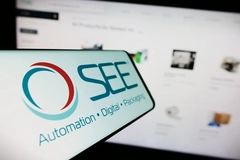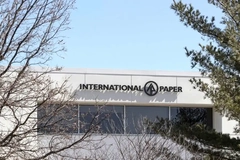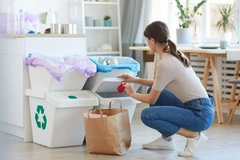Top Packaging Trends 2021: “Home Delivery Haven” and “The Carbon Catalyst” dominate COVID-19 age

26 Feb 2021 --- Innova Market Insights is revealing its Top Packaging Trends 2021 in collaboration with PackagingInsights, with “Home Delivery Haven” identified as the year’s leading trend. As much of the world perseveres with COVID-19 social restrictions, demand for grocery and premium F&B home delivery is skyrocketing, presenting new challenges and opportunities for consumer packaging.
Trend two: “The Carbon Catalyst” details the increasing relevance of packaging’s carbon footprint as the key indicator of environmental sustainability amid increasingly stark climate change warnings. Trend three: “Fiber-based Frenzy” documents the rising sophistication and availability of fiber-based solutions as viable alternatives to single-use plastics. Trend four: “Hygiene Heroics” explores innovation in touch-free solutions and antimicrobial technologies catering to heightened hygiene concerns. Trend five: “Reusable Revolution” spotlights the increasing scalability of reusable packaging models targeting a zero-waste world.
Trend one: Home Delivery Haven
E-commerce is a long-term trend, exponentially expanded by the COVID-19 pandemic. Home food delivery has especially soared as a consequence of lockdowns and social restrictions. According to a recent survey by Innova Market Insights, 35 percent of global consumers have increased their home food delivery use since the virus outbreak (2021). Brazil is above average, with more than half (58%) of consumers turning to online purchasing.
Moreover, the survey indicates 15 percent of global consumers do not expect to return to regular grocery habits post-pandemic. In the UK, Germany and the US, as many as 20 percent of consumers expect to continue with COVID-19 purchasing habits. Mondi’s thermo-insulated BCoolBox keeps fresh food chilled below 7°C, eradicating the need for cooling trucks.
Mondi’s thermo-insulated BCoolBox keeps fresh food chilled below 7°C, eradicating the need for cooling trucks.
Global accounting organization Deloitte supports the findings: “The pandemic is rapidly changing our behavior toward online channels, and the shifts are likely to stick post-pandemic... [while] essential product categories, such as beverages and fresh food, may be particularly susceptible to the convenience wave” (2020).
Furthermore, Amcor is predicting the online European grocery market will grow 66 percent by 2023. Dairy products – including cheese (purchased by 65% of shoppers) and yogurts and chilled desserts (purchased by 61%) – represent the most popular fresh food categories.
 Flexi-Hex’s Bottle Box uses paper honeycomb sleeves for premium protection and recyclability.A crucial challenge for transit packaging is freshness preservation, intensified by pandemic supply chain disruptions and geo-political uncertainties like Brexit. Mondi’s corrugated BCoolBox – keeping fresh food chilled below 7°C using thermo-insulation and replacing the need for high-energy cooling trucks – demonstrates the shelf life-enhancement power of packaging innovation.
Flexi-Hex’s Bottle Box uses paper honeycomb sleeves for premium protection and recyclability.A crucial challenge for transit packaging is freshness preservation, intensified by pandemic supply chain disruptions and geo-political uncertainties like Brexit. Mondi’s corrugated BCoolBox – keeping fresh food chilled below 7°C using thermo-insulation and replacing the need for high-energy cooling trucks – demonstrates the shelf life-enhancement power of packaging innovation.
Also hot on hygiene-enhancement, DS Smith and TemperPack partnered on ClimaCell, a recyclable thermal insulation barrier for temperature-sensitive products such as meal kits and perishable groceries. DS Smith research reveals Europeans plan to continue or increase buying groceries (62%) and home meal kits (49%) online long-term (2020).
Exponential e-commerce growth also creates opportunities for enhanced brand recognition and product experience through fit-for-purpose packaging. Marrying recyclability, product protection and convenience in the premium and non-premium beverage space, the year has already seen Smurfit Kappa launch the “ebottle” portfolio, Flexi-Hex release the Bottle Box using paper honeycomb sleeves, and Berry M&H introduce the PET Spirit Bottle, available with post-consumer recycled plastic.
Trend two: The Carbon Catalyst
Anti-plastic fervor fueled by the so-called “Blue Planet effect” has expanded into what could be coined the “Greta Thunberg effect.” Plastic pollution concern is undiminished but increasingly viewed as one of several environmental issues dominated by climate change.
 Coveris’ Duralite R film for Highland Spring combines 50% PCR and 50% PIR rPE for 54% carbon savings.Getty Images identified climate change and sustainability as the top public issues in 26 countries – above even COVID-19 – using its creative insights platform Visual GPS.
Coveris’ Duralite R film for Highland Spring combines 50% PCR and 50% PIR rPE for 54% carbon savings.Getty Images identified climate change and sustainability as the top public issues in 26 countries – above even COVID-19 – using its creative insights platform Visual GPS.
Climate change fears – ranging from Texas’ February freeze to the 2020 California wildfires – are encouraging brands to take a holistic approach to packaging’s environmental impact, ushering in an age of Life Cycle Assessments (LCAs) focused on more than just end-of-life disposal.
For example, Huhtamaki and Stora Enso welcomed an LCA finding paper-based packaging more eco-friendly than reusable tableware in quickservice restaurants. The PP-based multi-use system generated 2.7 times more CO2 equivalent emissions than the paper-based single-use system.
Recycled plastics accessible via established circular economies are also increasingly integral in fighting climate change. A landmark 2017 Alpla study found recycled PET (rPET) produces 79 percent lower CO2 emissions than virgin PET. Also, Coveris’ 50 percent post-consumer and 50 percent post-industrial recycled PE film for Highland Spring multipacks achieves a reported 54 percent carbon reduction compared to virgin plastic. Amcor is offering printed “Reducing CO2 Packaging” labels on flexible packs with two-thirds of European consumers supporting carbon labeling.
Amcor is offering printed “Reducing CO2 Packaging” labels on flexible packs with two-thirds of European consumers supporting carbon labeling.
Moreover, Garçon Wines’ carbon-neutral rPET wine bottle with Banrock Station demonstrates how supply chain CO2 savings can be achieved through lightweight design, weighing in at 87 percent lighter than the average UK glass wine bottle.
Carbon labeling continues to gain traction. In January, Amcor began offering printed “Reducing CO2 Packaging” labels on a range of flexible packs. The move came after a Carbon Trust-commissioned YouGov survey found two-thirds of European consumers support product carbon labels. Likewise, Upfield aims to introduce on-pack carbon labeling on 100 million plant-based and dairy spread packs this year.
Energy efficiency in production and processing is also crucial to packaging’s total CO2 impact. Renewable energy is increasingly common – ranging from Palsgaard’s carbon-neutral plant-based polymer additives to Crown’s wind-powered North American beverage can plants. Leading packaging suppliers are lining up to commit to net-zero carbon emissions, including Sealed Air by 2040 and Smurfit Kappa by 2050.
Robotics and automation are also minimizing energy in machinery, exemplified by Beumer’s robotpac. The highly-efficient robotpac palletizes up to 1,900 barrels per hour and can be equipped with a double gripper for maximum performance.
Trend three: Fiber-based Frenzy
Innovation in plastic-replacement fiber-based solutions is booming as brands explore plastic waste escape routes and new connections with the enlarging eco-conscious consumer base. Even in more technically challenging categories like confectionery bar wrappers and pouches, full-scale paper packaging conversions are occurring, notably Nestlé’s Smarties.
 Nestlé’s Smarties is fully transitioning to recyclable paper packaging in a global confectionery first.More stringent regulations are driving the transition from single-use plastics to fiber-based alternatives. The EU’s Plastics Strategy requires all packaging to be recyclable or reusable in an economically viable way by 2030, while its recently introduced plastics tax imposes a €0.80/kg (US$0.97/kg) levy on non-recycled plastic packaging waste.
Nestlé’s Smarties is fully transitioning to recyclable paper packaging in a global confectionery first.More stringent regulations are driving the transition from single-use plastics to fiber-based alternatives. The EU’s Plastics Strategy requires all packaging to be recyclable or reusable in an economically viable way by 2030, while its recently introduced plastics tax imposes a €0.80/kg (US$0.97/kg) levy on non-recycled plastic packaging waste.
Likewise, the UK is proposing a £200 (US$282) per ton tax rate for plastic packaging with less than 30 percent recycled content, effective from April 2022. China’s National Development and Reform Commission has also begun phasing out some single-use plastic items, as has Mexico City.
According to Innova Market Insights’ 2021 survey, half of US consumers (49%) regard packaging’s recyclability as its most important sustainability credential, followed by reusability (44%) and recycled material use (35%). Meanwhile, 72 percent of global consumers and 62 percent of US consumers recognize paper’s exceptional recyclability.
In the budding paper bottle space, Coca-Cola recently brought Paboco’s paper bottle prototype to the “critical testing phase” in Hungary, while Absolut Vodka is transitioning from glass to paper bottles in the UK and Sweden.
The prototype consists of a paper shell with an rPET closure and liner. Ultimately, the goal is to create a paper bottle without a plastic liner, fully recyclable as paper. Biopolymer pioneer Avantium was brought on board to develop a thin PEF liner. PEF is widely considered a promising, bio-based PET-replacement with superior performance. Absolut Vodka is transitioning from glass to the Absolut Paper Bottle in the UK and Sweden after successful UK trials.
Absolut Vodka is transitioning from glass to the Absolut Paper Bottle in the UK and Sweden after successful UK trials.
Interestingly, 46 percent of global consumers would accept decreased product shelf life if it meant more sustainable packaging (Innova Market Insights, 2021). However, whether paper bottles boast superior net environmental benefits to recycled PET remains a point of contention.
Nonetheless, the appetite for fiber-based solutions is evident in the rapid uptake of alternatives to plastic shrink wrap and rings. Last year, Coca-Cola adopted WestRock’s CanCollar paperboard ring technology for multipack cans in Spain and Graphic Packaging International’s KeelClip in Ireland, the Netherlands, and Poland.
Furthermore, Smurfit Kappa’s plastic-free TopClip bundler generates 36 percent CO2 savings compared to new plastic shrink wrap and 16 percent compared to recycled shrink wrap for its first customer Grolsch.
Trend four: Hygiene Heroics
The COVID-19 pandemic has also heightened consumer hygiene concerns, giving rise to touch-free packaging designs and antimicrobial technologies. According to Innova Market Insights’ consumer survey, 59 percent of global consumers believe packaging’s protective function is more important since the virus outbreak (2021).
 DS Smith’s touch-free designs prevent consumers from touching produce before purchase amid heightened hygiene concerns.Consumers mostly support the increased use of plastic for hygiene during the pandemic, including typically unrecyclable films on fruit and vegetables. While 20 percent of global consumers favor more plastics, 42 percent see them as an undesirable necessity at this time (Innova Market Insights, 2021).
DS Smith’s touch-free designs prevent consumers from touching produce before purchase amid heightened hygiene concerns.Consumers mostly support the increased use of plastic for hygiene during the pandemic, including typically unrecyclable films on fruit and vegetables. While 20 percent of global consumers favor more plastics, 42 percent see them as an undesirable necessity at this time (Innova Market Insights, 2021).
Furthermore, recent DS Smith research reveals one in three (33%) European consumers wash or disinfect all loose items, including fruit and vegetables, while 12 percent now avoid buying loose, unpacked goods.
In response, the supplier released a host of paperboard boxes and punnets designed to prevent consumers from touching fresh produce before purchase. Similarly, Mondi created the touch-free, corrugated Coral Tray for BIOhof Kirchweidach.
DS Smith is also pioneering Touchguard’s antimicrobial technology on cardboard e-commerce packaging, protecting consumers against potentially harmful bacteria. Touchguard boasts a proven 99.5 percent defense rate against feline coronavirus (the same virus family as COVID-19) and other pathogens such as MRSA and E. coli.
Similarly, Sirane’s Biomaster-integrated insulated bags boast a 99.9 percent defense rate against microbes found in chilled and frozen foods, while ZincIn's ocean plastic foodservice trays fend off coronavirus by integrating Parx Materials’ antimicrobial coating. DS Smith is developing Touchguard’s antimicrobial coating for global launch, applicable across e-commerce and shelf-ready packaging.
DS Smith is developing Touchguard’s antimicrobial coating for global launch, applicable across e-commerce and shelf-ready packaging.
Antimicrobial solutions also demonstrate impressive shelf life-extending capabilities, vital in maintaining product hygiene and avoiding food waste. The EU-funded NanoPack’s antimicrobial films – based on the combination of natural nanomaterials and essential oils – extend bread shelf life by at least three weeks, fresh cherries by 40 percent and yellow cheese by 50 percent. NanoPack is preparing the technology for commercial launch.
Rotting food produces methane – a gas more potent than CO2. Consumers are evidently on board with the food waste fight, with global consumers regarding freshness indicators as the most critical packaging feature (44%), slightly more popular than minimal (43%) and flexible packaging (42%) (Innova Market Insights, 2021).
Notably, the US Food and Drug Administration (FDA) has consistently maintained there is no credible evidence on COVID-19 transmission via food packaging.
Trend five: Reusable Revolution
Reusable packaging is increasingly recognized as crucial to waste reduction, with wide-ranging support from NGOs, regulatory bodies and consumers. According to Innova Market Insights, the majority of global consumers (52%) believe reusable packaging is the most sustainable model, followed by recyclable (50%) and recycled (39%), biodegradable (31%) and compostable (24%) (2021).
 Burger King is trialing TerraCycle Loop’s reusable packaging model in the US cities of New York City and Portland, and in Tokyo, Japan.The European Commission is addressing rising packaging material consumption (a record high 173 kg per inhabitant in 2017) by incentivizing reuse design, including restrictions on single-use applications where reusable alternatives are possible. In Australia, social enterprise Thankyou unexpectedly announced its flagship bottled water’s discontinuation, encouraging consumers to embrace reusable alternatives.
Burger King is trialing TerraCycle Loop’s reusable packaging model in the US cities of New York City and Portland, and in Tokyo, Japan.The European Commission is addressing rising packaging material consumption (a record high 173 kg per inhabitant in 2017) by incentivizing reuse design, including restrictions on single-use applications where reusable alternatives are possible. In Australia, social enterprise Thankyou unexpectedly announced its flagship bottled water’s discontinuation, encouraging consumers to embrace reusable alternatives.
Research supporting reusable packaging’s CO2 reduction benefits is also piling up. Zero Waste Europe, Reloop and the University of Utrecht, the Netherlands, found reusable bottles, crates, jars and other solutions are up to 85 percent more climate-friendly than single-use options (2020). Meanwhile, a multi-university environmental study in China showed reusable “sharing” tableware could reduce waste by up to 92 percent over single-use paper alternatives.
Although many reusable packaging systems remain in trial stages, growing environmental consciousness and big player backing point to short and long-term growth. Prevalent here is TerraCycle’s zero-waste, reusable packaging platform Loop, active in the US, Canada, Australia, Japan, Germany, France and the UK. Loop’s rapidly expanding partnerships include McDonald’s, Burger King, Tupperware, Tesco and Open Farm pet food. Unilever has launched its largest supermarket refill trial in Europe with Asda, monitoring consumer engagement with QR codes.
Unilever has launched its largest supermarket refill trial in Europe with Asda, monitoring consumer engagement with QR codes.
Meanwhile, Unilever has launched its largest-ever supermarket refill trial in Europe with UK supermarket Asda for personal care brands Simple and Radox, Persil laundry liquid and Pukka and PG Tips teabags using touchscreen machines. QR codes are enabling Unilever to track refills, evaluate consumer engagement and expand the scheme.
Stay tuned to PackagingInsights throughout the year for daily news and insights monitoring these trends and others.
By Joshua Poole











